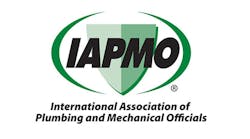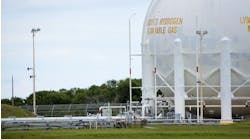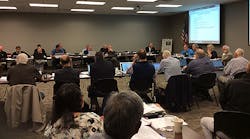ONTARIO, CALIFORNIA — Dipper wells are not controversial. Shower valves and tub spout shower diverters are. In their final act, members of the International Association of Plumbing & Mechanical Officials Green Technical Committee worked through public comments on the 2015 edition of the Green Plumbing & Mechanical Code supplement that will be published later this year. The GPMS is a water- and energy-saving overlay to both the Uniform Plumbing Code and Uniform Mechanical Code. Many of its provisions have already been adopted into the UPC and UMC.
GTC members learned during the meeting that IAPMO would develop an American National Standard for water efficiency and sanitation to be known as IAPMO/ANSI WE•Stand 2017. The standard will use as its basis the water provisions within the 2015 GPMS. IAPMO intends to publish the standard in December 2017. WE•Stand will replace the GPMCS. Members of the GTC and other interested parties were encouraged to apply for membership in the new committee. Pete DeMarco, IAPMO’s senior vice president of advocacy and research, noted that the committee would have to be structured according to ANSI consensus rules and would number about 30 members.
Control over and limitations of dipper wells, the watery cleaners of ice cream scoops, was passed quickly without discussion or debate. Regulation of dipper wells has been a favorite cause of Texas engineer Bill Hoffman, H.W. “Bill” Hoffman & Associates, who has seen his share of commercial and institutional kitchen water waste. Dipper wells must be equipped with a permanent shutoff valve, and the maximum flow rate shall not exceed 0.2-GPM. The Food Service Technology Center reports that most all dipper wells that they collect data on use 0.2-GPM or less, Hoffman noted in his supporting documentation. The FSTC recommends setting the flow rate at a maximum of 0.2-GPM. This will result in significant water savings.
The debate over shower valves and tub spout shower diverters were a different matter. It was a debate over the basic philosophy of what is appropriate for the GPMS. Committee members like James Majerowicz, an instructor for United Association Plumbers Local 130 in Chicago, and Thomas E. Pape, Principal Consultant at Best Management Partners, representing the Alliance for Water Efficiency, believe that the GPMS should be an aspirational “reach” code that speaks to the state-of-the-art. Others, such as Matt Sigler, technical director for Plumbing Manufacturers International, or Jordan Krahenbuhl, a third-generation plumber and Plumbing and Mechanical Inspector for the Clark County, Nevada, Building Department, believe that if a code provision isn’t practical and enforceable, then it’s pie in the sky and doesn’t belong in the GPMS.
Prominent California plumbing engineer John Koeller introduced an amendment to the shower provisions that the shower valve must be ASSE 1016 certified against scalding. A 1.5-GPM showerhead must be matched with a valve that offers scald protection down to 1.5-GPM and that must be clear. This was a topic of considerable debate at the last GTC meeting, where a compromise was reached that the valve must have some temporary sticker (as opposed to a permanent marking) stating the flow rate at which it provides scald protection. Sigler argued that the manufacturers would ignore the provision if it’s not in the base UPC code or in the product standard, and that it will be unenforceable if it’s just in the GPMS. Michael Cudahy, codes and training specialist at the Plastic Pipe & Fittings Association, agreed with Sigler, saying that if this is health or safety it needs to be addressed either in the UPC or in the product standard.
Ed Osann, from the Natural Resources Defense Council, pointed out that the temporary sticker needs to be on the shower valve at the time of installation and inspection, not 20 years later, so he didn’t see the requirement as burdensome.
Pape argued that scalding in the shower has always been a real danger and that’s why the committee needed to address it. He also wanted it in the GPMS to motivate the relevant parties, who he believes are foot-dragging, to insert the requirement into the product standard.
After several votes on different motions all failed to pass, DeMarco said the committee was at an impasse and the language in the GPMS would remain unchanged from the previous version.
Committee members also vigorously debated whether tub spout shower diverters should have zero leakage. The current standard from the California Energy Commission is that a diverter can’t leak more than 0.1-GPM both before and after life cycle testing. Proponents pointed out that the CEC has identified hundreds of tub spouts with zero leakage shower diverters.
Sigler maintained that the language belongs in the product standard. Inspector Krahenbuhl said that if the provision was not in the UPC, then nobody would verify it; Clark County won’t bother.
“This is low hanging fruit,” said Majerowicz from the plumbers union. “It’s at no cost to the consumer,” and it’s an easy way to save water and energy.
Ultimately, the zero leakage proponents had their way, with the provision passing 19-5 with one abstention.


